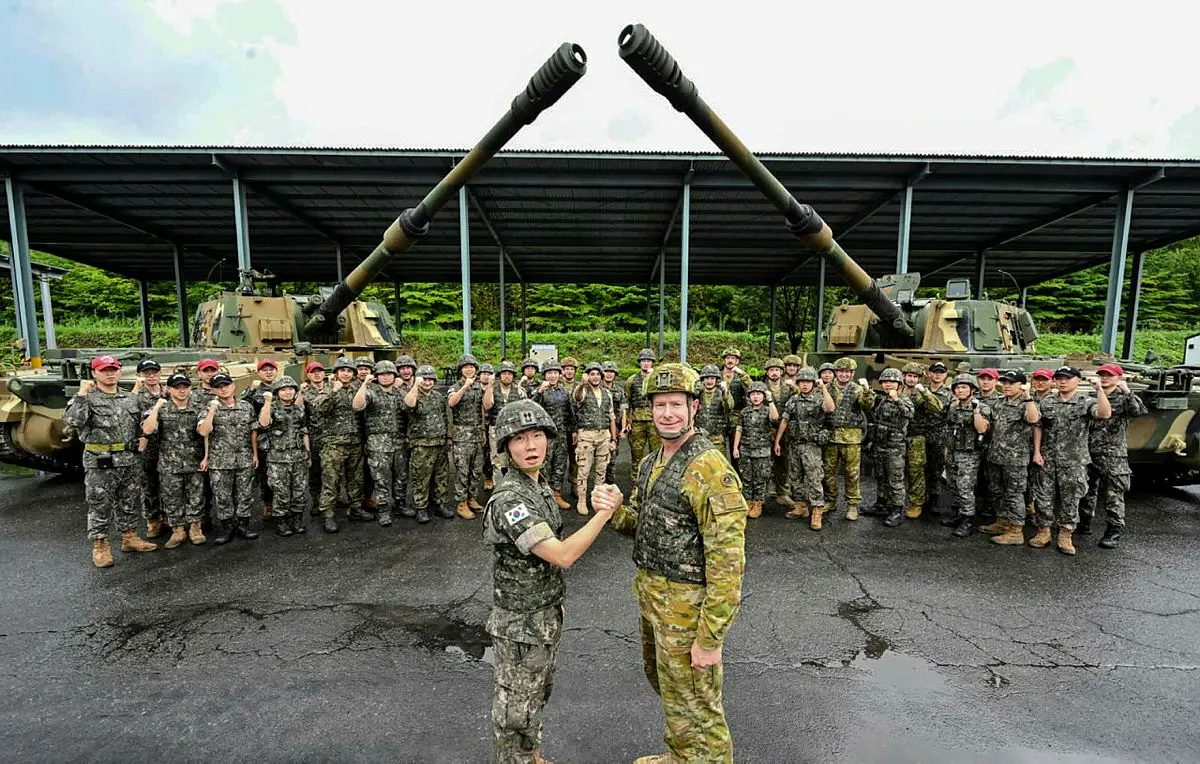In August 2024, a significant milestone was reached in the modernization of Australian artillery as soldiers from Australia and the Republic of Korea (ROK) participated in a familiarization course in South Korea. This training was focused on the operation of the K9 Thunder self-propelled howitzer and the K10 armored ammunition resupply vehicle, which are set to become central components of Australia’s artillery capabilities. The course marks an essential step in preparing Australian forces to integrate these advanced systems into their arsenal, further enhancing the country’s defense posture. Australia’s journey towards acquiring the K9 Thunder and K10 vehicles began in September 2020, when the Australian government confirmed the purchase of 30 K9 howitzers and 15 K10 vehicles from South Korea’s Hanwha Defense. These vehicles, designated as AS9 Huntsman and AS10 in Australia, are expected to enter service by 2028, with primary deployment planned for the 4th Regiment, Royal Australian Artillery. This acquisition is a key element of Australia’s broader strategy to modernize its artillery capabilities and ensure the military remains equipped with cutting-edge technology.
During the training, Lance Bombardier Lachlan Kirk, one of nine Australian gunners participating, had the opportunity to fire the K9 Thunder for the first time. He was one of nine Aussie gunners on familiarisation training in South Korea to become future instructors on the vehicle. When Lance Bombadier Lachlan Kirk fired a K9 K9 Thunder self-propelled howitzer for the first time, he realised the shock didn’t compare to an M777. The recoil of self-propelled howitzer was good, it’s not as full-on as the M777. This included each of them blasting 155mm rounds from the K9 for the first time. Because the K9 has an automatic laying system, Lance Bombadier Kirk said it was as simple as reviewing the fire control system data, laying the gun, and pressing a button to fire it. The self-propelled howitzer also has manual mode with a hand wheel and levelling bubbles, similar to the M777 – and a semi-automatic mode with a joystick for directional adjustments or direct fire. They also learnt how to perform a lot of operator maintenance, such as removing the muzzle and tracks for repairs.

Sergeant Jake Brown, who has been an instructor on the M777, said the main difference was being able to shoot and move quickly. If moving, the K9 can stop and fire within 60 seconds, or if stationary, 30 seconds. It will be able to fire rounds and move from that position immediately so you don’t receive counter-battery fire,” Sergeant Brown said. He said the most beneficial part of the course was driver training. Tactically manoeuvring a 50-tonne armoured vehicle is something the gunners have not needed to do with the M777. It was easier to load the K9 with the K10 armoured ammunition resupply vehicle, without having to manually move the ammunition by hand. The K10 is loaded with 104 rounds and connects with the rear of the K9. Driving tracked vehicles is going to be new to everybody who’s coming through, and getting qualified on the system. Towards the end of next year, there will be a more in-depth, train-the-trainer course for potential instructors so they can teach trainees from the 4th Regiment, Royal Australian Artillery (4 Regt, RAA) at Puckapunyal.
The K9 Thunder is a South Korean 155 mm self-propelled howitzer designed and developed by the Agency for Defense Development and private corporations including Dongmyeong Heavy Industries, Kia Heavy Industry, Poongsan Corporation, and Samsung Aerospace Industries for the Republic of Korea Armed Forces, and is now manufactured by Hanwha Aerospace. K9 howitzers operate in groups with the K10 Ammunition Resupply Vehicle variant. In September 2020, the Minister for Defense, Linda Reynolds, announced a request for tender to locally build 30 K9s under the Land 8116 Phase 1 Protected Mobility Fires requirement. The sole-source request for tender will be released to the preferred supplier, Hanwha Defense Australia, to build and maintain 30 K9s and 15 K10s, as well as their supporting systems. These will be built at Hanwha Defense Australia’s Geelong facility. Australian variant AS9 Huntsman is based on Norwegian K9 VIDAR. The Australian variant AS9 was expected to feature a NATO standard fire-control system, the BMS-F (Battlefield Management System – Fires), the RWS (Remote Weapon System), and anti-tank mine protection. The hydropneumatic suspension was enhanced to support its increased weight.
















